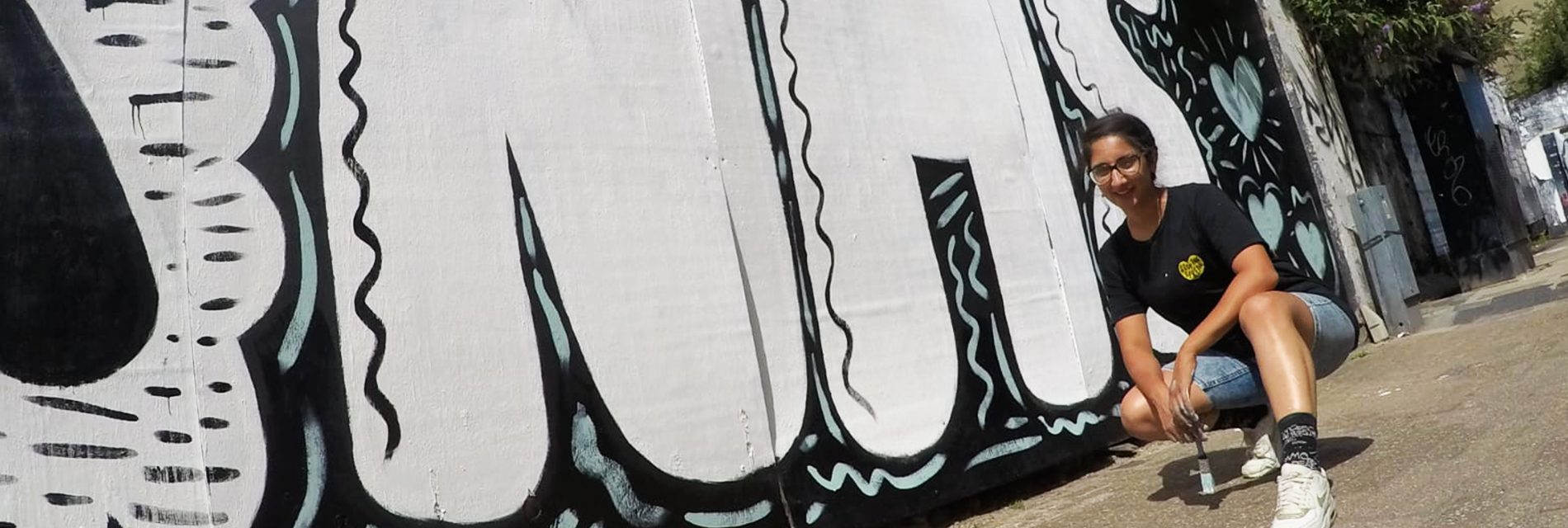(August 14, 2024) Bharath Arvind played his first game of golf when he was eight years old, when he accompanies his father to the Chilanga Golf Club in Lusaka, Zambia. He became an passionate amateur golfer, playing club tournaments in Zambia, India and Canada, and then college golf in the USA< where he went to study. The self-described global citizen has worked with global corporations such as BMW, Essar Group and in Public Relations agencies for clients such as IBM, QUALCOMM and Infosys, across the US, India and Canada. He also served as the Managing Editor of Golf Digest India. After nearly two decades of corporate life, Arvind followed his passion for golf and founded Golfer’s Edge Chennai, in a bid to re-imagine the perception of golf as an elite sport. The indoor golf course is affordable and accessible to kids and adults alike.
Childhood in Zambia

Bharath Arvind, founder of The Golfer’s Edge, Chennai
Arvind grew up in Zambia in the late 80s and early 90s and spent his formative years at the International School of Lusaka (ISL), which shaped his personality and ability to adapt to different cultures and people. Returning to India in his eighth grade, his early years in Zambia helped him to make friends with a variety of kids from different nationalities and races.
“That in turn helped me to make friends fast when I came back to school in Mumbai (AVM Bandra). I credit the exposure I received during those early years in Zambia for my ability to be comfortable in any environment I am thrown into. While we were in Zambia, sports played a key role in my life, again thanks to my parents who encouraged me and afforded me the opportunity to learn tennis, football, and golf amongst other activities,” he tells Global Indian.
Leaving home
On his return to India, he continued to play golf at the Bombay Presidency Golf Club, where his parents were members. He often played club tournaments, and eventually, his talent for the game earned him a sports and academic scholarship at the Waldorf College in Iowa, USA.
“It was a fantastic experience,” Arvind recalls. “When you are on your own for the first time, and far away from home, you must learn to manage your time and life. It teaches you to be independent and take responsibility for every action and decision,” he says, adding that the experience helped him grow up much faster than his peers, who had remained back home in India. After graduated from the Waldorf College, he moved to Drake University, Iowa and did an MBA at Thunderbird School of Global Management (Arizona State University).

Sadly, Arvind lost his father when he was a student in the US, and watched his mother take over the reins. Her strength and determination became a great source of inspiration to him, as he ensured that he finished college, and never let him give up on his hopes or dreams of entrepreneurship. “She has been a pillar of support in all respects (emotional, financial, and spiritual) and has been an immense inspiration to me on what it takes to be focussed, determined and to always help others in need,” he says. He imbibed her determination and focus, and also learned how to be a self starter. “I think one needs to be very self-motivated if you want to succeed in anything in life. You must be able to pick yourself up and show up every day no matter what the situation,” Arvind adds.
The corporate life
Post his studies he pursued a career in PR working in the US and India with agencies and corporates in their marketing and communications/ corporate communications functions. “I eventually pursued my passion for golf and became the editor of Golf Digest India thanks to working with Rishi Narain, a stalwart in the Indian golf industry,” says Arvind. Narain’s company had taken on the publishing rights for the magazine from CondeNast and for Arvind, the job was a dream come true.
From there, he ventured out on his own to found a consulting practice for marketing communications to help startups and small businesses with their marketing needs. “Around 2017 I was keen to explore migrating to Canada to determine whether that would be a good fit for my family. I briefly migrated to Canada for a year and a half to explore the opportunity and eventually decided to come back to India and settle. The experience there was also very helpful to help me understand what my priorities were in life and what I needed to focus on,” he says.
Golfer’s Edge Chennai
Golf in India has always been associated with the elite and is not necessarily very accessible. However, that is slowly changing as more driving ranges and facilities are opening up in different cities. However, to Arvind, indoor golf and golf simulators are the way forward, as they are an affordable option to make the sport more accessible to people.
“My partner, Hari Natarajan, started TeeTime Ventures in 2014 to install golf simulators in residential buildings, corporate offices, private homes, and other places,” Arvind explains. The two had first met during Arvind’s time with Golf Digest India, and have remained associated ever since. TeeTime Ventures has also enjoyed a good run, completing over 80 projects across the country. “Golfer’s Edge Chennai is our first company-owned centre and franchise with the prime objective of making golf more affordable and accessible to people. We want to introduce more folks to the game and Golfer’s Edge Chennai over the past one year has introduced well over 700 people to the game of golf in Chennai alone,” he says.

Golfer’s Edge is an indoor golf arena in Chennai
Lessons learned
He believes that the best way to handle challenges is by taking them head on, responding to it and not overreacting to it. “Try and understand the situation for what it is worth. There are multiple solutions to any challenge. How you react and respond is what matters. Sometimes the best way to deal with a challenge is to not do anything and give yourself some time to approach a solution with a calm mind and on another day,” he says. He believes that finding the right partner or co-founder is super critical in business.
“There needs to be a good match and a good mix of skill sets each one brings to the table. And there must be a great deal of comfort between the co-founders to be able to speak the truth and not have to worry about repercussions. If you trust one another then you know that either person is coming from a good place with the same goal in mind,” he says. In his free time, he plays golf, reads, travels, spends time with the family and works out to try and stay as fit as possible and is also learning the guitar. “We wish to have multiple centres across the country to be able to introduce more people to golf in a fun and exciting way. The next few years will be working towards that goal. Ultimately if we can inspire a new generation of golfers to compete at the top level globally and have them start their journeys at one of our centres, I believe that would make us proud,” he signs off.
Follow Golfer’s Edge Chennai on Instagram.
Read a similar story of Manoj Badale, the British Indian entrepreneur steering Rajasthan Royals’ IPL journey.




